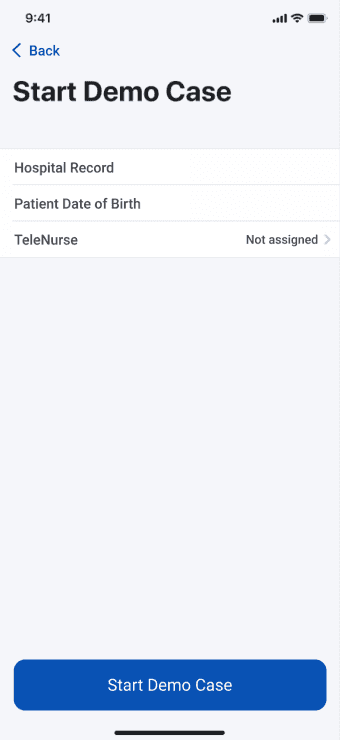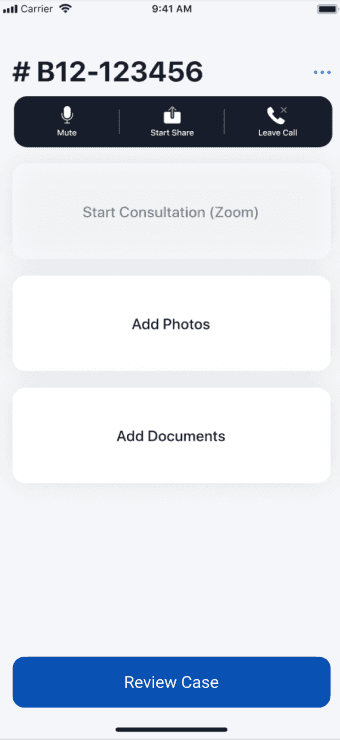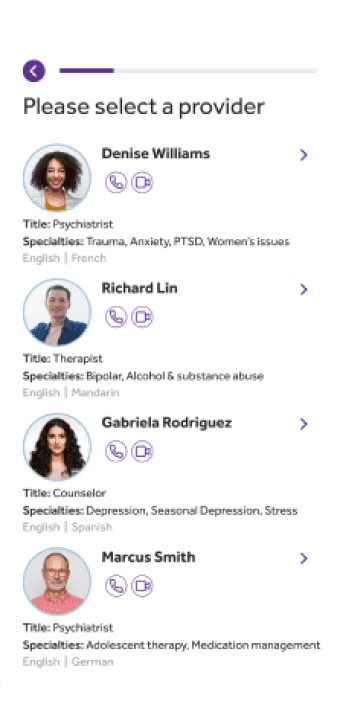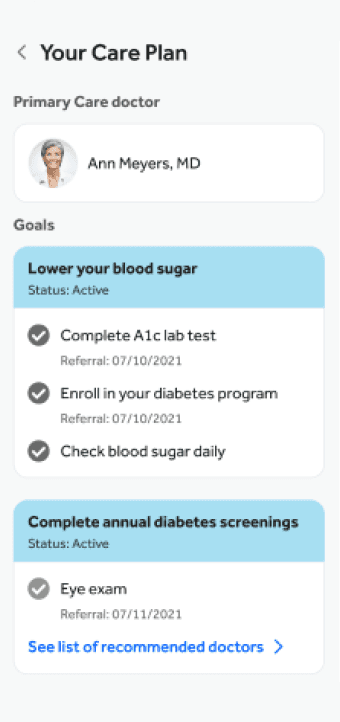
Telemedicine for primary care: key functionality, benefits & real-life cases
January 16, 2025
- Home
- Healthcare software development solutions & services
- Telemedicine software
- Telemedicine for primary care

by Andrew Korzun,
Head of Healthcare Solutions Department
Integrated with patient information acquisition and storage systems (EHRs, patient portals, laboratory software), as well as remote patient monitoring devices and payment modules, such solutions ensure faster patient and medical data exchange and streamline remote health care delivery.
Itransition delivers telehealth software for primary care that provides flexibility and comfort to both patients and healthcare practitioners, making primary care services more accessible and affordable to positively influence the population's health.
Key statistics about primary care telemedicine
of medical consultations are currently made via telehealth
McKinsey
of patients are satisfied with direct-to-consumer telehealth
J.D. Power
of medical consultations are currently made via telehealth
J.D. Power
Key functionality of telemedicine for primary care
A primary care telemedicine solution possesses specific functionality to efficiently connect patients and physicians

Consultations & diagnostics enablement
- Patients’ condition assessment capability
- One-on-one video and audio consultations with front-line care providers
- Chats for synchronous and asynchronous communication
- Secure image sharing
- Recordings of therapy sessions and consultations
Medication management
- Medication plan development
- Treatment adherence logs
- Adverse effect or allergy reports
- Prescription and refill orders from preferred pharmacies
- Alternative treatment suggestions
- Test and/or screening prescription and scheduling with the selected labs or specialists
Patient education management
- First aid instructions
- Сondition and care management training for different age groups
- Resources for educational, clinical, and psychological support for patients
- Educational materials about rare conditions for medical personnel
- Immunization schedules
- Self-check instructions for patients
Security
- Compliance with privacy and security regulations (HIPAA, GDPR, etc.)
- Adherence to the major security and interoperability protocols in the industry (OWASP, FHIR, etc.)
- Multi-factor authentication
- Data encryption
- Role-based data access
Data management
- Secure storage for session records, clinical notes, and other medical data
- Patient profiles containing patient details, health logs, and other patient data
- Data backup and recovery enablement
Financial management
- Integrated payment gateways
- Treatment cost calculators
- Billing for medical services and consultations
Mobile primary telemedicine
- Access to all major telehealth features on the go
- One-step checkout
- Gamification of patient education and wellness checkups
- Push notifications for alerts and reminders
Expand your healthcare organization’s reach with a telemedicine solution
Essential integrations for primary care telemedicine
Clinics can further advance the effectiveness of telemedicine by integrating their telehealth solutions with other medical tools and software. However, it’s crucial to properly integrate telemedicine solutions with other systems to secure patient data exchange.
Enables first-line medical workers to access patients’ full medical history
Helps conduct remote examinations or simple interventions and provides patients’ vitals to primary care physicians for a clearer view of the condition
Enables online medication prescriptions and simplifies the placement and delivery of orders and refills
Enhances the accuracy of diagnoses and helps physicians predict the likelihood of conditions’ development
Billing & insurance management solutions
Facilitates primary care reimbursements and simplifies communication with insurance providers
Medical image software
Allows clinicians and patients to access CT scans, X-rays, ultrasounds, and other medical images
Simplifies care management procedures (e.g. scheduling patient appointments and referring them to specialists)
Simplifies the delivery of test results to patients and their primary care providers
Top platforms for primary care telemedicine
Key capabilities
Secure high-quality video, audio, and asynchronous communication between patients and clinicians
Customizable patient portals to provide patients with secure access to their health records, appointment scheduling, and messaging with healthcare specialists
Centralization of patient and clinical data, making it accessible to authorized users
Seamlessly integrates with healthcare organizations’ other health systems, including EHR and CRM, with the help of existing APIs and connectors
Intelligent bots for automated authorized data collection from patient chats and clinical notes
Collection of patients’ vital health metrics from remote patient monitoring devices
Pricing
The final cost depends on the number and type of components included in the Microsoft Cloud-based telehealth solution. Each MS Cloud for Healthcare component requires separate licensing.
Solo™ from Teladoc
Key capabilities
Secure audio and video consultations, as well as text chats between patients and clinicians
Remote patient condition monitoring and integration with patient medical devices
Integrates with other health systems, such as EHRs via pre-built connectors and API gateways
Pricing
Available on request
Converge�™ from Amwell
Key capabilities
Physician-patient communication via secure audio and video calls and chat rooms
AI chatbot that communicates in English and answers routine questions
Remote patient monitoring and diagnostics due to seamless integration with a variety of medical gadgets from TytoCare and BioBit
Can be easily integrated with the organization’s health IT ecosystem via API gateways, standardized connectors, and other solutions
Automatic checking of patients’ eligibility for different types of services to help them receive affordable care
Pricing
Available on request
Kareo Telehealth
Key capabilities
Real-time communication between healthcare providers and patients via audio, video, and messages
A secure online portal for patients to access their health records, schedule appointments, and communicate with providers
Seamless integration with Kareo EHR for secure patient data storage, management, and transfer
On-the-go access to health data and communication tools for patients and providers via the mobile app
Quick and easy setup
Pricing
Available on request
Why adopt telemedicine for primary care
A third of Americans do not have a primary care physician, which puts additional pressure on hospitals and ERs. Telemedicine, however, can solve the above problem and offers some other additional benefits for medical organizations, clinicians, and overall public health as well.
More accessible care & increased patient satisfaction
Telehealth helps patients communicate with their medical providers and get care without wasting time and energy on travel and waiting in line. This is especially valuable for people in rural areas, disabled people, or the elderly.
Additionally, telemedicine reduces travel costs and greenhouse gas emissions, which also influences people’s decision to opt for virtual care. Combine all of these benefits with longer sessions from attentive medical personnel to increase patient satisfaction.
Improved efficiency of primary care professionals
Medical workers are at especially high risk of burnout. Clinics across the US report shortages of family medicine specialists, primary care physicians, and, even more so, nursing staff. Telemedicine enables healthcare professionals to work from home, balance their personal and professional lives, and be less likely to feel disappointed in their jobs. By enabling employees to work remotely, healthcare organizations ensure high personnel retention rates and enhanced productivity.
Increased revenue & resource optimization
Telehealth solutions for primary physicians, telenursing software, and pediatric virtual care solutions allow medical organizations to cover more area with their services, reach out to more patients, and expand their service offering, driving more revenue. Telemedicine can also help lower the number of “no-show” patients as well as those who have put off their visit to a primary physician until they need ER or ICU services, controlling patient flow and supporting resource optimization.
Real-life examples of telemedicine in primary care
RPM & mobile telehealth suite
Our team delivered a suite consisting of a mobile telemedicine app and a web-based admin portal for nurses, serving as the first line of medical help for sexual assault victims in rural and underserved areas in the US. This HIPAA-compliant app supports high video resolution during patient examination, flawlessly connects to smart remote monitoring and imaging devices, and securely transmits data. It enables nurses to get 24/7 consultations from experts for accurate evidence collection while providing a safe environment for the victims.
Scheme title: Mobile telehealth interface
Data source: itransition.com — A remote patient monitoring and mobile telehealth suite


Personalized virtual primary care
Teladoc’s Primary360 is a mobile app that connects patients to the Care Team – their primary care physician, nurse, consultant, mental health specialist, and other medical and administrative staff that help patients check their health and manage chronic conditions and refer them to specialists for in-person visits if needed. The care plan is complemented with a blood pressure cuff to enhance the checkups’ accuracy and can be expanded by adding consultations with more medical specialists and advanced technology, like AI-powered chatbots, medical image analysis, or condition analytics.
Scheme title: Personalized primary care app interface
Data source: teladoc.com — Primary360: Primary care to become your healthiest self



Virtual exam kits for rapid response e-visits
In the Detroit area, patients can access virtual medical care in under two hours any time of the day via the Henry Ford Health System (HFHS). For better diagnostic precision, patients can use a remote examination device with such accessories as an infrared thermometer, camera, otoscope, stethoscope and tongue depressor. Then, if physical help is needed, virtual care professionals can call paramedics to assist the patient and administer diuretics, hydration, breathing treatments, or antibiotics.
Primary care telehealth software implementation roadmap
Healthcare organizations usually go through five stages during telehealth software adoption for primary healthcare.
1
Requirements gathering
IT consultants and industry experts collaborate with an in-house team of medical professionals to clarify the healthcare organization's main goals and requirements for the telemedicine software. Proceeding from this, they choose the most suitable technology stack and the development approach.
2
Project planning
The organization’s in-house medical team and the vendor’s team create a detailed plan of the implementation process, consisting of hardware and network preparation, solution installation, integration, and post-implementation tuning.
3
Development
A secure and compliant software with a patient-centric interface is developed and connected to the necessary third-party services, or upgraded with additional modules, and tested to fix any bugs. The software’s quality is also continuously assured throughout the process.
4
Deployment & training
The telehealth solution is installed into the organization's health IT ecosystem. The vendor or a third-party consultant conducts training sessions for personnel. Established medical workflows are modified in view of the telemedicine solution.
5
Support & modernization
A dedicated team provides post-implementation support to resolve any issues that come up during the solution’s usage, monitor its performance, and implement upgrades when necessary.
Primary care telehealth cost factors & ROI
The cost of a primary care telehealth solution depends largely on the capabilities it provides, the size of the organization and its patient base, and the number of enabled integrations. Using low-cost or open-source modules can decrease the development expenses, while numerous customizations will increase the costs significantly. On average, primary care telehealth software costs range from $150,000 for a simple solution that enables video or audio visits, consultation scheduling, and treatment planning. The price for a complex suite equipped with AI chatbots, analytics, and RPM capabilities will start from $400,000. A healthcare provider can expect a return on investment in roughly six months after the system’s successful implementation.
Scheme title: The correlation between the solution’s complexity and cost
Primary telemedicine implementation challenges
Security concerns
The healthcare industry experiences data breaches more often than any other industry. Telehealth apps, in particular, are frequently targeted by cybercriminals.
The healthcare industry experiences data breaches more often than any other industry. Telehealth apps, in particular, are frequently targeted by cybercriminals.
When choosing a telehealth platform, prioritize those with robust security mechanisms. Make sure that platform vendors and implementation partners adhere to the latest data storage and healthcare software development security practices. Additionally, don’t forget to provide comprehensive security training for your personnel to safeguard sensitive information and avoid unintentional breaches.
Lack of executives’ buy-in
Healthcare organization stakeholders often struggle to get on the same page about adopting telehealth.
Healthcare organization stakeholders often struggle to get on the same page about adopting telehealth.
The pros and cons of adopting telehealth have been analyzed extensively after the COVID-19 pandemic and described in multiple articles that can be found via PubMed or Google Scholar. These resources can help stakeholders make an informed decision about adopting telemedicine.
Resistance from personnel
Healthcare professionals can resist the adoption and use of telemedicine because of the learning curve and the required workflow changes.
Healthcare professionals can resist the adoption and use of telemedicine because of the learning curve and the required workflow changes.
Medical organizations implementing telehealth should invest in good change management procedures to make the transition easier for the personnel and also conduct comprehensive training for medical professionals to help them become apt telehealth software users.
Our telehealth services
Consulting
We provide expert advisory services to help healthcare organizations choose and implement high-performing telemedicine solutions that fit their workflows and improve patient care, increase medical personnel’s productivity, and drive revenue growth.
- Business needs and goals assessment
- Implementation, optimization, or modernization strategy development
- Solution conceptualization
- Platform selection
- Advisory support on custom telehealth platform development
- Telehealth implementation support
Implementation
We provide end-to-end telehealth solutions implementation services that help healthcare organizations to successfully incorporate out-of-the-box and custom telehealth solutions into their IT ecosystem and healthcare workflows.
- Custom telehealth solution development/platform configuration and/or customization
- Integration with existing healthcare software and medical devices
- User training and support
Support & maintenance
Our support specialists help ensure the long-term success of the medical organizations’ telehealth programs. We offer service packages for different healthcare organizations’ needs and budgets that can include ongoing and on-demand maintenance, troubleshooting, and enhancement of telehealth solutions.
- System performance monitoring
- Issue resolution
- Routine and complex system upgrades
- Backup and recovery planning
- Personnel training

Innovate your primary care with telemedicine
There is no turning back from telemedicine anymore: it is praised by physicians for returning satisfaction to their work and by patients for making medical services more accessible. So it’s no wonder that the majority of healthcare organizations across the US are either planning to offer hybrid health care services or are already providing them. If you are among the healthcare innovators who want to provide accessible continuous care to more patients, give medical professionals better working opportunities, and open new revenue streams, consider implementing telemedicine in primary care settings sooner rather than later

Boost your primary care’s efficiency with a custom HIPAA-compliant telehealth solution
FAQs
What are the most popular primary care telemedicine platforms?
Primary care providers can choose from a variety of platforms with distinct feature sets: Microsoft Cloud for Healthcare, Sesame Care, PlushCare, Teladoc, MeMD, Amwell, and others. Each of these solutions is popular with a particular group of users, so it’s essential to pick the one most relevant to your medical practice’s specific needs and workflows.
Is primary care telemedicine covered by Medicare?
Medicare, Medicaid, and other insurance plans usually cover virtual health services, at least partially. For more information on how to reduce the cost of your televisit, talk to your insurance company.
What are the hallmark qualities of telemedicine solutions?
Primary care telemedicine software should be secure, reliable, have an intuitive interface, and protect your patients’ data. It also should be flexible and scalable to enable your practice to grow and change.
When to use a mobile telehealth app for primary care delivery?
Primary care physicians and nurse practitioners can use telehealth apps when they don’t have a laptop or a computer with them but need to quickly conduct pre-visit data collection and patient evaluations or carry out initial and follow-up appointments.
How to improve communication effectiveness during a telehealth visit?
To make communication during telemedicine visits more effective, ensure clinicians and patients have high quality video and audio, along with a stable connection. Use simple language and clear explanations and encourage patient questions. Additionally, demonstrate presentations and other resources to patients to further improve their understanding of their condition and the required next steps.

Service
Telemedicine software development: key features, integrations & services
Itransition offers end-to-end custom telemedicine software development and implementation services for healthcare organizations of any size and specialty.

Case study
Telemedicine-ready EHR
Development and testing of a Telemedicine-enabled EHR, integrated with innovative voice recognition, smartpen and clinical text analysis features.

Case study
A remote patient monitoring and mobile telehealth suite
Learn how Itransition developed a remote patient monitoring and telehealth platform for sexual assault victims for a US research center.

Insights
Telemedicine for pediatrics: a comprehensive overview
Discover how to successfully choose, integrate, and implement telemedicine solutions for pediatrics to improve your medical childcare.
More about healthcare software services
Services
- Healthcare software development
- Healthcare mobile app development
- Patient portals
- Hospital management software
- Hospital inventory management software
- CRM
- Data analytics
- Remote patient monitoring
- Medical image analysis
- Pharmacy management software
- Medical device software development
- Patient engagement solutions
EHR
Telehealth